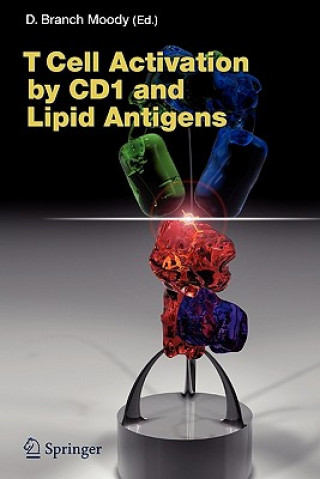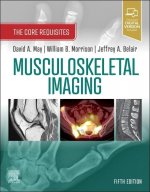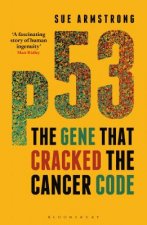
Kód: 01653853
T Cell Activation by CD1 and Lipid Antigens
Autor Branch D. Moody
There is increasing evidence that the CD1 system has been conserved throughout mammalian evolution and is capable of presenting structurally diverse diacyglycerol, sphingolipid, polyisoprenol and lipopeptide antigens. These featur ... celý popis
- Jazyk:
 Angličtina
Angličtina - Vazba: Brožovaná
- Počet stran: 348
Nakladatelství: Springer-Verlag Berlin and Heidelberg GmbH & Co. KG, 2010
- Více informací o knize

Mohlo by se vám také líbit
Darujte tuto knihu ještě dnes
- Objednejte knihu a zvolte Zaslat jako dárek.
- Obratem obdržíte darovací poukaz na knihu, který můžete ihned předat obdarovanému.
- Knihu zašleme na adresu obdarovaného, o nic se nestaráte.
Více informací o knize T Cell Activation by CD1 and Lipid Antigens
Nákupem získáte 429 bodů
 Anotace knihy
Anotace knihy
There is increasing evidence that the CD1 system has been conserved throughout mammalian evolution and is capable of presenting structurally diverse diacyglycerol, sphingolipid, polyisoprenol and lipopeptide antigens. These features of CD1 antigen presentation systems now point to a new and expanded view of the natural function of ab T cells, which involves surveillance of both the protein and lipid components of target cells. Further, cellular systems that were previously considered to have functions in lipid metabolism can now be studied in context of their immunological functions. This volume provides a comprehensive discussion of these basic aspects of CD1 biology and summarizes the most recent research into the role of CD1 in infectious, autoimmune, allergic and neoplastic disease.There is increasing evidence that the CD1 system has been conserved throughout mammalian evolution and is capable of presenting structurally diverse diacyglycerol, sphingolipid, polyisoprenol and lipopeptide antigens. This volume provides a comprehensive discussion of these basic aspects of CD1 biology and summarizes the most recent research into the role of CD1 in infectious, autoimmune, allergic and neoplastic disease.For decades, T cells were thought to solely respond to protein-derived antigens. However, the discovery of the CD1 antigen presenting system shows how antigen presenting cells can display lipid antigens to T cells. Crystal structures show that CD1 proteins accomplish this function by inserting lipids into a hydrophobic groove on the distal surface of the protein, forming CD1-lipid complexes that act as ligands for T cell receptors. CD1-reactive T cells with conserved (NK T cells) or diverse T cell receptors possess cytokine secretion and other effector mechanisms that influence many aspects of immune response. There is increasing evidence that the CD1 system has been conserved throughout mammalian evolution and is capable of presenting structurally diverse diacyglycerol, sphingolipid, polyisoprenol and lipopeptide antigens. These features of CD1 antigen presentation systems now point to a new and expanded view of the natural function of ab T cells, which involves surveillance of both the protein and lipid components of target cells. Further, cellular systems that were previously considered to have functions in lipid metabolism can now be studied in context of their immunological functions. This volume provides a comprehensive discussion of these basic aspects of CD1 biology and summarizes the most recent research into the role of CD1 in infectious, autoimmune, allergic and neoplastic disease.
 Parametry knihy
Parametry knihy
Zařazení knihy Knihy v angličtině Medicine Clinical & internal medicine Diseases & disorders
4290 Kč
- Plný název: T Cell Activation by CD1 and Lipid Antigens
- Autor: Branch D. Moody
- Jazyk:
 Angličtina
Angličtina - Vazba: Brožovaná
- Počet stran: 348
- EAN: 9783642089060
- ISBN: 3642089062
- ID: 01653853
- Nakladatelství: Springer-Verlag Berlin and Heidelberg GmbH & Co. KG
- Hmotnost: 545 g
- Rozměry: 235 × 155 × 20 mm
- Datum vydání: 25. November 2010
Oblíbené z jiného soudku
-

Healing Add
459 Kč -

Radical Remission
454 Kč -

Cancer as a Metabolic Disease - On the Origin, Management, and Prevention of Cancer
3828 Kč -

Palliative Radiation Oncology
6277 Kč -

Roitt's Essential Immunology 13e
1684 Kč -

Infectious Diseases: A Clinical Short Course
2375 Kč -

CT Anatomy for Radiotherapy
2388 Kč -

Bethesda Handbook of Clinical Oncology
1823 Kč -

How to Starve Cancer
511 Kč -

Comprehensive Review of Infectious Diseases
3368 Kč -

Spillover
313 Kč -

Healing Lyme Disease Coinfections
444 Kč -

Allergic to Life
1079 Kč -

Immunology Guidebook
6897 Kč -

Cardio-Oncology
2810 Kč -

Schaum's Outline of Immunology
756 Kč -

Emperor of All Maladies
338 Kč -

Natural Treatments for Lyme Coinfections
424 Kč -

Oxford Handbook of Clinical Immunology and Allergy
1138 Kč -

Musculoskeletal Imaging
2280 Kč -

Graphic Guide to Infectious Disease
1259 Kč -

Health and Disease Begin in the Colon
1286 Kč -

Oxford Handbook of Infectious Diseases and Microbiology
1335 Kč -

TNM Classification of Malignant Tumours 8e
1293 Kč -

Cancer and the New Biology of Water
603 Kč -

Basic Immunology
1666 Kč -

Autoimmune Solution
303 Kč -

p53
344 Kč -

Lanzkowsky's Manual of Pediatric Hematology and Oncology
5497 Kč -

Principles of Gynecologic Oncology Surgery
9095 Kč -

Radiation Oncology Management Decisions
2983 Kč -

Netter's Infectious Diseases
2127 Kč -

Atlas of Multiparametric Prostate MRI
5044 Kč -

Vaccine Race
303 Kč -

Complete Guide to Breast Cancer
464 Kč -

Color Atlas of Immunology
610 Kč -

Compatibility Gene
303 Kč -

Key to Self-Liberation
2314 Kč -

Handbook of Breast MRI
3245 Kč -

Dermatoscopy of Non-Pigmented Skin Tumors
6396 Kč -

Breast Ultrasound
2532 Kč -

Manson's Tropical Diseases
6574 Kč -

Abeloff's Clinical Oncology
11333 Kč -

Clinical Physiology of Acid-Base and Electrolyte Disorders
2851 Kč -

Atlas of Breast Surgery
7468 Kč -

Cardio-Oncology Practice Manual: A Companion to Braunwald's Heart Disease
3632 Kč -

Illustrated Anatomical Segmentectomy for Lung Cancer
4194 Kč -

Nanomedicine for Cancer Diagnosis and Therapy
5985 Kč -

Chemotherapy Protocols and Infusion Sequence
2810 Kč
Osobní odběr Praha, Brno a 12903 dalších
Copyright ©2008-24 nejlevnejsi-knihy.cz Všechna práva vyhrazenaSoukromíCookies








 Vrácení do měsíce
Vrácení do měsíce 571 999 099 (8-15.30h)
571 999 099 (8-15.30h)